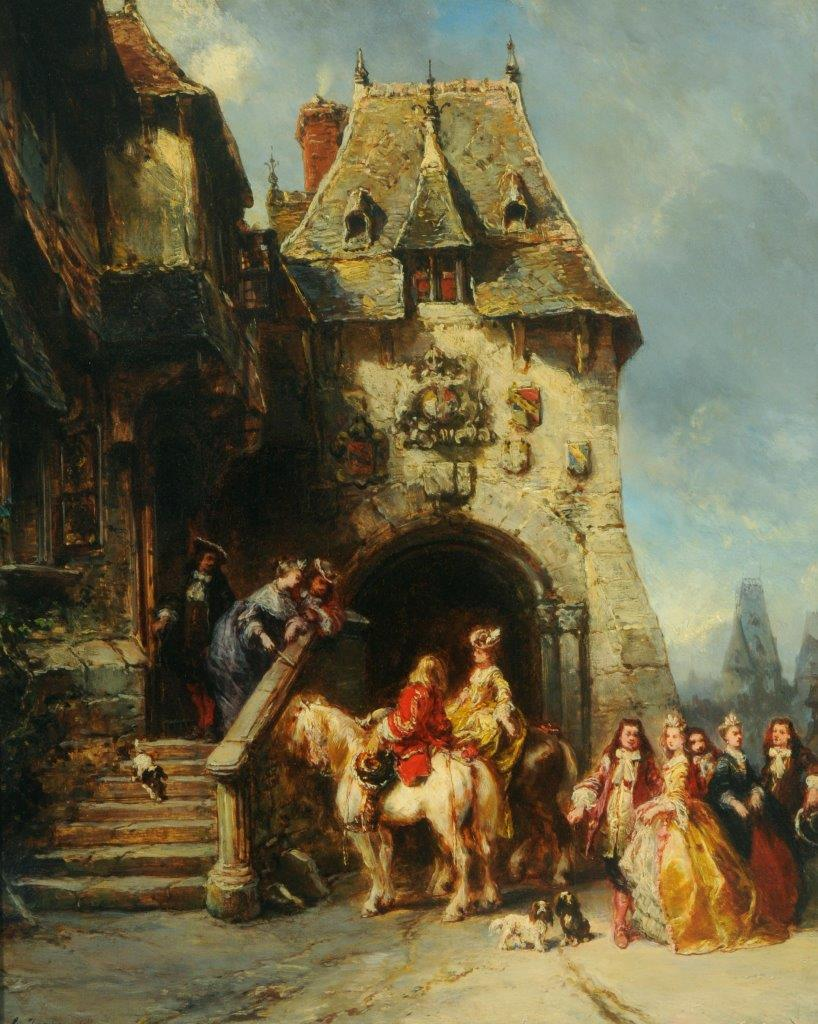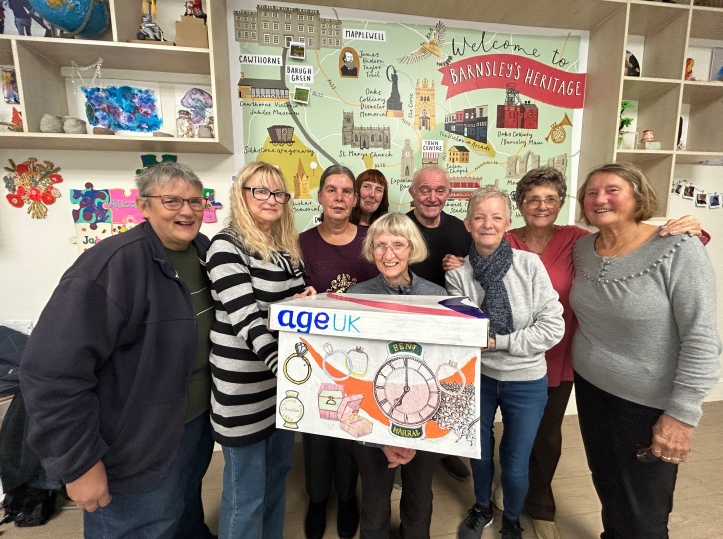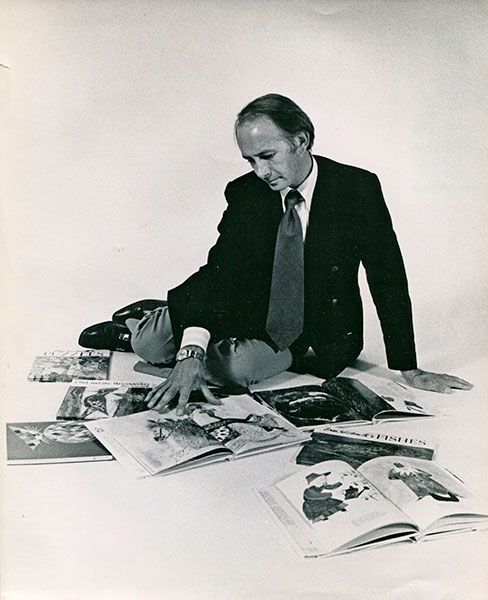Natalie Murray (Collections and Exhibitions Manager) takes a look at one of the French painters who features in the Light & Soul: Early Impressions of The French Landscape exhibition at The Cooper Gallery
Light & Soul is the culmination of a research project into the French drawings and paintings at the Cooper Gallery, funded by the Headley Fellowship through Art Fund. The project focused on the 19th century landscape artists, including those who worked in the Forest of Fontainebleau and along the coastal areas of Normandy. The research also revealed some of the wonderful examples held in other collections and we are delighted to welcome remarkable paintings on loan from Sheffield Museums, York Museums Trust, Leeds Museums and Galleries, The Bowes Museum and The National Gallery, London, displayed alongside the treasures from the Cooper Gallery collection.

Eugène Isabey’s career was long and illustrious and he was widely regarded as the best marine painter of his time, excelling in his speciality of coastal views. He was also an incredibly versatile artist who painted in different genres with ease and a spirit of adventure which appealed to private collectors. The popular studio he ran in Paris was to have far-reaching influence as he taught both Eugène Boudin and Johan Barthold Jongkind, encouraging their exploration of sea and sky. Isabey grew up in a family enveloped in royal favour. His father, Jean Baptiste Isabey (1767-1855) was France’s most famous painter of miniatures who found many clients at the royal court of Versailles. He negotiated the political waters of four successive regime changes during his lifetime, testimony to his skill as a miniaturist and perhaps a diplomatic personality. Eugène Isabey was taught by his father and, with his natural talent and all the material advantages of his family’s position to support him, he exhibited at the 1824 Salon at the age of 20, immediately winning his first medal.
The 1820s were also spent travelling extensively in Normandy and to England where he met Bonington and Eugène Delacroix (1798-1863) in 1825. The work of Delacroix and Théodore Géricault (1791-1824), two iconic Romantic painters of French history and marine painting, were hugely influential on Isabey’s style. The 1830s began with a commission for Isabey as official painter to the French navy in Algiers, and saw yet more travels around France, marriage to Laure Lebreton in 1832 and the birth of their daughter Marie in 1833. Throughout this time Isabey was exhibiting at the Salon, selling his work and building his reputation, but he was also developing his own unique style for the picturesque and the dramatic.

He was an early explorer of the landscapes of Brittany but it was the ports, cliffs and beaches of Normandy to which he constantly returned. Boulogne, Le Havre, Honfleur, Étretat and Fécamp were all preferred places to sketch the rocks, waves and storms. Isabey had a reputation for a swift and chaotic manner of painting, a method of execution which produced works full of movement, vigour and expression suited to the waves and storms of his seascapes.
He also developed a dark palette with light touches as highlights for his more dramatic scenes such as The Entrance into Port but was capable of creating lighter, more serene scenes as Boats Leaving Shore. Some critics thought he went too far and, through his loose brushwork, lost touch with the reality of what he was depicting. It is a little surprising that someone who regularly created paintings with such little definition could remain so successful at this time. Perhaps the answer lies in a combination of the sheer energy and strength of his work with the appeal it held for the private collectors to whom he mostly sold. Isabey did not solely confine himself to seascapes and also favoured historical genre, having a liking for a scene with figures in costume such as

Whether he was working in landscape, seascape or genre, he was keenly interested in portraying the everyday work or leisure activities of people of different classes.
In 1857 Isabey settled permanently at Varengeville, just to the west of Dieppe on the Normandy coast. His wife was in ill-health and and the couple hoped the sea air would be of benefit to her, but she passed away in 1862. Isabey married Marie-Emma Marizot two years later and continued to exhibit, sell his work successfully and travel when possible. By 1874, however, it was necessary for him to spend more time on the southern coast of France, where the climate was kinder to his gout. He last exhibited at the Salon in 1877 and died at his house in Montévrain, east of Paris, in 1886. There are few personal documents which give us an insight into Isabey’s character, but what we can glean from the writings of others is that he was highly sociable with many friends amongst artists and the wealthy of society. His Paris atelier was well attended and he had an enthusiasm for mentoring and helping young painters.

Isabey was a great favourite of S J Cooper’s. The group of eleven paintings by the artist in the Cooper Gallery collection includes examples of both his genre scenes and his marine painting. Full of movement, The Entrance into Port is dominated by the very dark tones of the cliffs and sails which tower above the figures in the boats. The changing colours of the sky indicate the strength of the winds, as does the white of the crashing waves. Isabey has used flashes of red and yellow to pick out the sailors.

A similar work exists in the collections of the Musée des Beaux-Arts in Caen, painted c.1867 with the title Matelots sortant du port de Saint-Valery-en-Caux. ‘Matelot’ is a French slang word for ‘sailor’ and Saint-Valery-en-Caux is a Normandy fishing port. The Caen painting is recorded as a sketch for a painting exhibited at the Salon in 1867 titled Matelots Salutant Le Christ en Sortant du port de St Valery-en-Caux, (Sailors saluting Christ as they leave the harbour of St Valery-en-Caux). All three works show the large crucifix with figure in the upper left corner. Cooper notes that he bought this painting from the dealer Adolphe Beugniet on rue Laffitte in 1888 and that Isabey would not sell the work during his lifetime. Cooper also writes that the painting hung above the drawing room door at his home in Barnsley.

This unusually proportioned painting gives a panoramic view with several sailboats leaving shore, a small group of people walking along the beach and a cluster of buildings on the right. The scene has a fresh and breezy feel, patches of blue sky with a few clouds and a moderately vigorous sea. It is interesting to compare this work with the beach scenes of Eugène Boudin. Isabey’s composition is more picturesque and traditional but it’s possible to see the influence he exerted on Boudin in the light palette and everyday nature of the scene.
Light & Soul: Early Impressions of The French Landscape Exhibition

The exhibition is on display at The Cooper Gallery until 7 October 2023, pick up an exhibition catalogue for £14.99 when you visit the gallery.
You can also visit the exhibition virtually https://my.matterport.com/show/?m=YYtV7661YLk
Have you read our recent blogs?




